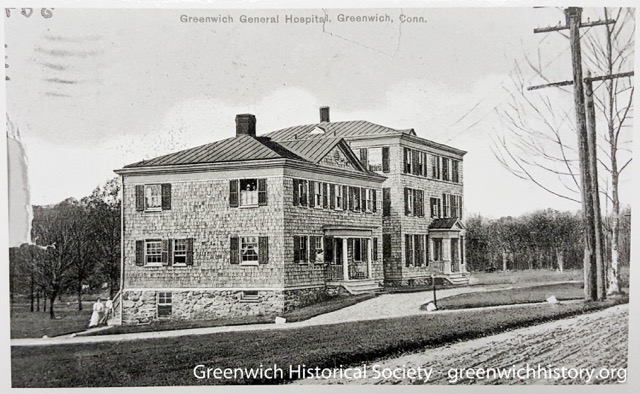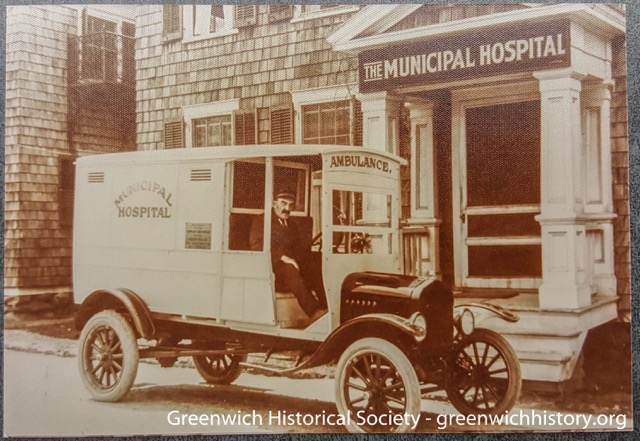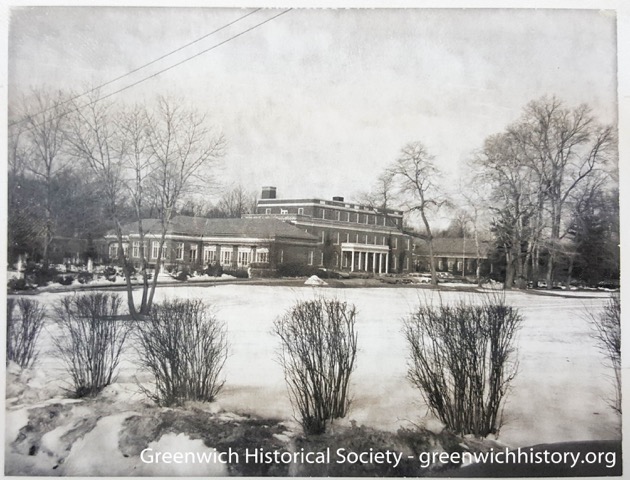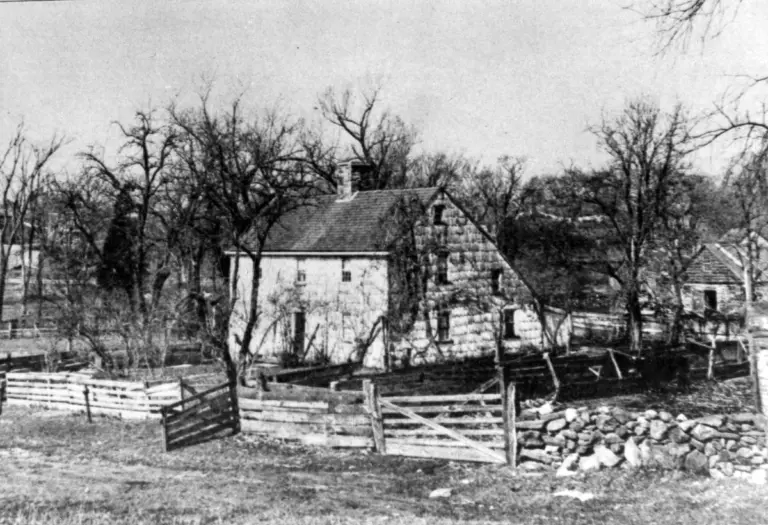To understand how Nathaniel Witherell arrived at this moment of intense deliberation over its future, it helps to understand the history of how the institution that has served Greenwich for more than 100 years evolved into the elder care facility that exists today.
The deeply intertwined relationship between Witherell and the town began like many other of Greenwich’s popular institutions and amenities: as a gift.
In 1903 legendary resident Robert M. Bruce of Bruce Museum fame, bequeathed nine acres of land in mid-country Greenwich to build what the underlying deed described as a “non-profit” hospital that was intended to treat “contagious diseases,” according to news reports at the time. Among them, tuberculosis, diphtheria, and scarlet fever.
Located on a swath of open land on Parsonage Road, the process of building out the facility was managed by Rebecca Witherell, the wife of another consequential Greenwich resident and the eventual namesake of the facility, Nathaniel Witherell.
Witherell and his family, were no strangers to transforming Greenwich. The wealthy shipping magnate bought hundreds of acres of land beginning in the late 1890s through the turn of the century. Property he subsequently used to build out communities from Belle Haven to Field Point.
But it was his wife who managed the family business after his death, and who proposed to the Board of Selectmen at the time a plan to complete the first iteration of the hospital in 1910.
“I desire to erect at my own expense, and to present to the Town of Greenwich a tuberculosis hospital to be known as the Nathaniel Witherell Pavilion,” Witherell wrote to the town.
The budget for construction was set at $25,000.
Members of the board accepted her proposal, noting “the good fortune of Greenwich in possessing citizens whose broad and far reaching philanthropy was so considerate of those in the community who need it most.”
And it was this underlying purpose, a gift to provide for the health of the town’s least fortunate, that defined Withrell over time as the needs of the community evolved.
Oddly, it was not until 1946 that the town officially named the hospital after Nanthaniel Witherell. The formal designation came after a closed door meeting of the Board of Health, which announced that the Witherell family’s role in the hospital had not been adequately acknowledged.
“We felt that the family most identified with the Hospital was the Witherell family,” announced William Henry Hoyt, a member of the board.
But shortly thereafter, the town began to explore how to confront another vexing health problem: a growth in the population of older residents in Greenwich and beyond.
In 1949 the state appointed a commission to study aging, noting at the time Connecticut had a “higher proportion of residents of age 65” than the rest of the country, a problem the town’s health board was also studying. Several years later The Greenwich Time reported half of Witherelll’s tuberculous wing was being converted into a facility for people suffering from long term illness.
 By 1957, Witherell’s role in caring for the elderly was firmly established.
By 1957, Witherell’s role in caring for the elderly was firmly established.
A New York Times report noted that “45 residents from 54 to 92 are under care.” The budget, the report states, was $225,000, of which the town financed roughly half. The charge to patients? Based solely on their ability to pay, which was capped at $14.
And it was this unique relationship between the town and a facility responding to evolving health challenges that defines the questions about its future.
The hospital and the town were one and the same.
That’s because as it grew, the finances of the hospital and the town were one and the same. An arrangement former Chair of the Board of Estimate and Taxation member Michael Mason says made it less obvious how dependent Witherell was on city coffers.
“Nathaniel Witherell was just another entity of the town, everything it collected went into the town, it was operated just like the parks and recreation department,” said Mason, who now manages labor contracts for the town.
And those connections were not limited to cash infusions. Many of the contributions were in-kind, Mason says. The town’s Human Resources department, legal counsel, and even maintenance operations contributed to the Witherell’s upkeep, a relationship that continues into the present.
But Mason believes the inflection point for evaluating the town’s municipal oversight started when finance officials began the process of untangling the town and Witherell’s financial reporting.
“We kind of created a separate checkbook for Witherell, which meant we took it out of the appropriations process to see it as a separate entity,” Mason said.
“We knew it was being subsidized. The question was – what is the threshold we’re willing to accept?”
Debate over privatization begins in earnest.
It was at this point that the debate over privatization began in earnest. An ongoing discussion that came to a head when the selectman’s office appointed an eight member board to study the possibility of privatizing it. That effort led to requests for proposals from private firms interested in managing Witherell – currently being debated now.
Investment in the facility continued.
Even as the deliberations over Witherell’s future relationship with the town continued, Greenwich did not waver in its commitment to improving the facility.
In 2011 the city approved $22.5 million in bonds as part of Project Renew, a plan to build out new treatment facilities and overhaul its aging infrastructure. The investment tripled the number of private bedrooms, expanded rehabilitation facilities, and also included new back-up generators and nursing stations.
But the history of Witherell’s evolving relationship with the town is only part of the story.
 Nursing home industry faces major challenges.
Nursing home industry faces major challenges.
Because as Witherell has grown, so have the challenges facing nursing homes in general. It’s a business that insiders who spoke to The Sentinel say is difficult to make profitable, and requires constant attention to a strict regulatory framework in order to succeed.
It’s also an industry dealing with a high rate of turnover that makes handling regulatory demands and maintaining a high standard of patient care equally as fraught. A rash of retirements combined with qualified workers simply leaving healthcare altogether makes finding and retaining skilled personnel an increasingly difficult proposition.
Witherell’s Board Chairman Lawrence Simon says the hospital is currently wrestling with staffing issues. He says the demand for care at Witherell remains strong but that finding skilled employees has become more difficult over time.
“Shortage of staff is our biggest challenge,” Simon told The Sentinel. “It’s not like we don’t have enough demand, we just don’t have enough people.”
Still, the strain on Witherell from both industry trends and workforce turmoil is just another reason to keep it under town management argue residents opposed to privatization. A commitment rooted in the origin of the hospital that started as a gift, but has come to mean much more to the community it serves.
“We don’t expect Parks and Recreation to make a profit, I don’t think we should expect Witherell to either,” said Amy Badini, a member of Witherell’s family council, a group made up of relatives of patients currently receiving care.
“We need to show our commitment to the people of this town at their most vulnerable moment in their lives.”
Our thanks to the Greenwich Historical Society for their remarkable research and assistance with this story.
This is the second in our four part series on The Nathaniel Witherell. Over the next two weeks The Sentinel will share with readers the perspective of its many stakeholders, its complicated financial picture through the years, and what comes next. Look for third part of our series right here next week.





